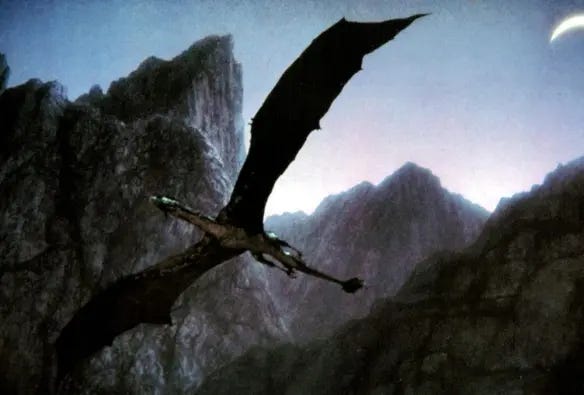Dragonslayer
“Are you afraid of dragons?"

A dragon is terrorizing the medieval land of Urland. Representatives from the beleaguered kingdom make the long journey to Cragganmore Keep to inform the old wizard Ulrich of their plight, and to beseech him to defeat the dragon, sooner rather than later, as Urland has been sacrificing its virgin women twice a year to appease the beast. But much like magic itself, Ulrich is old, and not long for this world, so the task to confront the dragon falls to the wizard's young and untested apprentice.
I have seen films like Conan the Barbarian, Clash of the Titans, The Beastmaster, Krull, and Hawk the Slayer dozens of times. Dozens. I’ve even seen Legend more than once, mostly for Tim Curry’s amazing Devil costume…
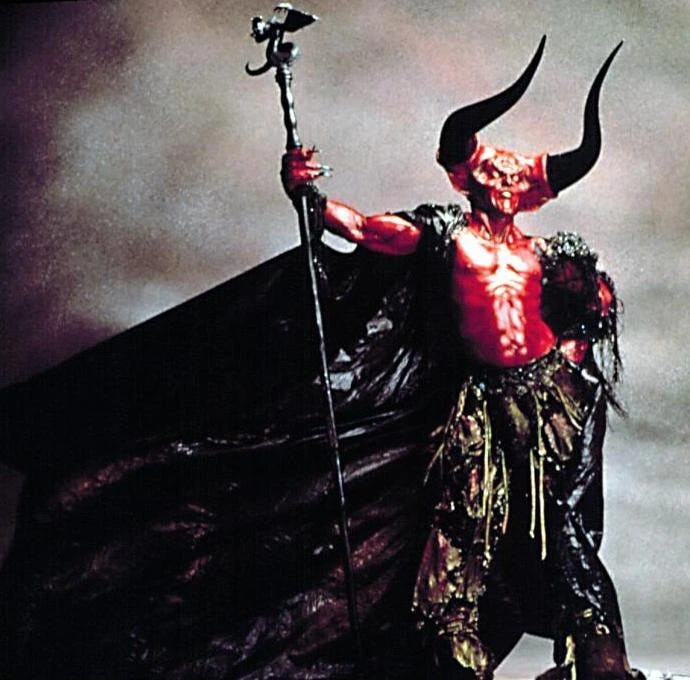
But for no specific reason (although it could be rooted in Peter MacNicol’s hair), Dragonslayer (1981) is one of those movies that, while I know and recognize it, and I’ve certainly seen that poster hundreds of times on the VHS at the local video store over the years, I’ve never actually sat down to watch it.
Until today…
Nominated for two Oscars in 1982 at the 54th annual Academy Awards, for best visual effects and best original score, which it lost to Raiders of the Lost Ark and Chariots of Fire, respectively, Dragonslayer is set in a fantastical version of the Middle Ages. It is a time when dangerous religious superstitions ruled the land, and buckets of night soil are tossed out onto streets of mud each morning. So, it’s a lot like now. This is also a world where magic is real, if not a bit shabby at this point, and thatch-roofed villages chafe beneath the ravenous greed of men and monsters, and even dragons, but they can only cower whenever such leathery-winged magnificence darkens the sky.

To save themselves from one such beast’s fiery wrath, twice a year, at the solstice and at the equinox, the people of the kingdom of Urland trek up to the dragon’s mountain lair to sacrifice a young woman, and for a time, the creature’s love of flambéed lady pieces is sated.
For a time…
Peter MacNicol (Ally McBeal, Sophie’s Choice) plays Galen, a sorcerer’s apprentice whose eagerness outweighs his experience. Does he also have terrible hair, even for the 70s and 80s? For the love of God and all that’s holy, yes, but still, he’s a swaggering little son of a bitch in this film, and I appreciate his moxie.
The king of Urland and his men don’t like Galen though, or his moxie, and while they’re afraid of angering the dragon, sure, it’s never really clear why they dislike him so much, and seemingly on sight too, but I assume it’s also because of the hair.
God, it’s so terrible…
You just can’t take a hero seriously with hair like that.
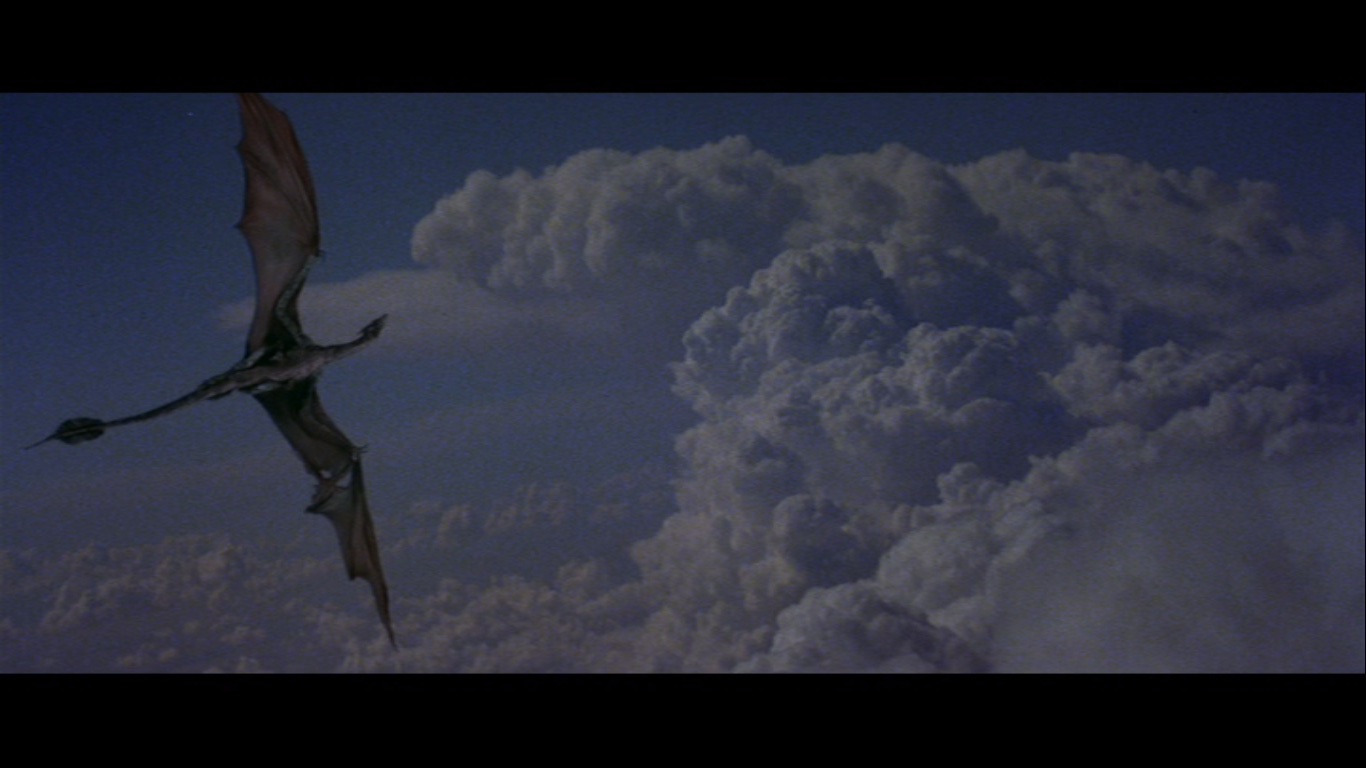
But once the headstrong Princess is chosen to be the dragon’s next flaming hot cheeto, the king, as per usual when it comes to the privileged class, very suddenly changes his opinion on the sorcerer’s apprentice, despite the terrible hair. The King doesn’t offer any real help, of course, but he does stop standing in the way, so there’s that at least. This allows Galen to enter the smoky lair and face the dragon alone, only for the beast to get extra mad once it sees that Galen has slaughtered all of its babies, and kick his ass. That’s an understandable reaction on the dragon’s part, but to be fair, those baby dragons did eat the headstrong Princess, so both sides, right?
It’s cool though, the headstrong Princess wasn’t Galen’s love interest. He’s in love with a Winona Ryder-looking peasant girl named Valerian, which I approve of. She gave him a shield made out of dragonscales, which I also approve of.
Also, Galen’s got a big long hard spear to poke the dragon with, which Valerian also gave him...
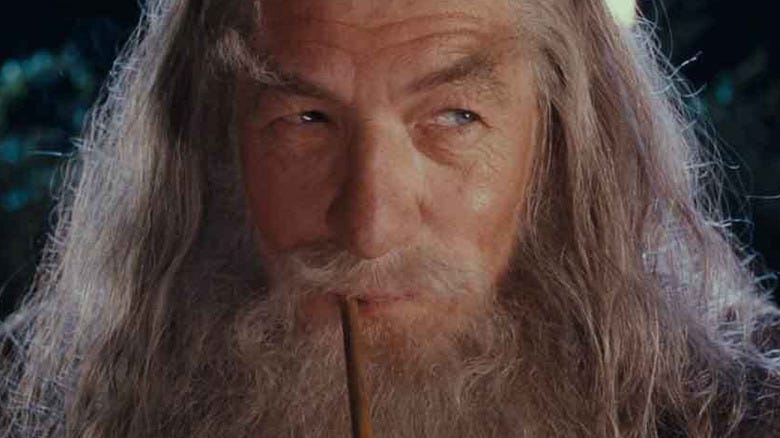
Anyway…
A big part of this film is the battle of education versus superstition, with sorcery playing the role of the educated, the enlightened, and the open-minded, and organized religion being the haven of the brute, the ignorant mule, and the dangerous beast known as the Mob of Angry Men. The setting sun on The Age of Magic in this film is a herald of the coming pall that will be the Dark Ages. It’s easy to see the point of the metaphor’s commentary, as each time it is called upon in the film, Christianity only proves itself to be unequal to the task of stopping the dragon, or really of giving any substantial help at all, providing nothing but cold comfort as the village burns.
I found it fitting that, while the Church does nothing the whole time, except to hamper every effort to slay the dragon, in the end, after it’s all said and done, the Christians show up late with their songs and their pomposity, to stand over the fallen beast—at that point a symbol of a dying age of wonder and magic and curiosity—to pointlessly drive a spear into its corpse, and to make a big show of taking all the credit for its death.
Very fitting.
Of course, the fact that magic doesn’t really pack the same punch that it used to also means that Galen isn’t entirely equal to the task of taking down the dragon either, but perhaps his old master has a plan…
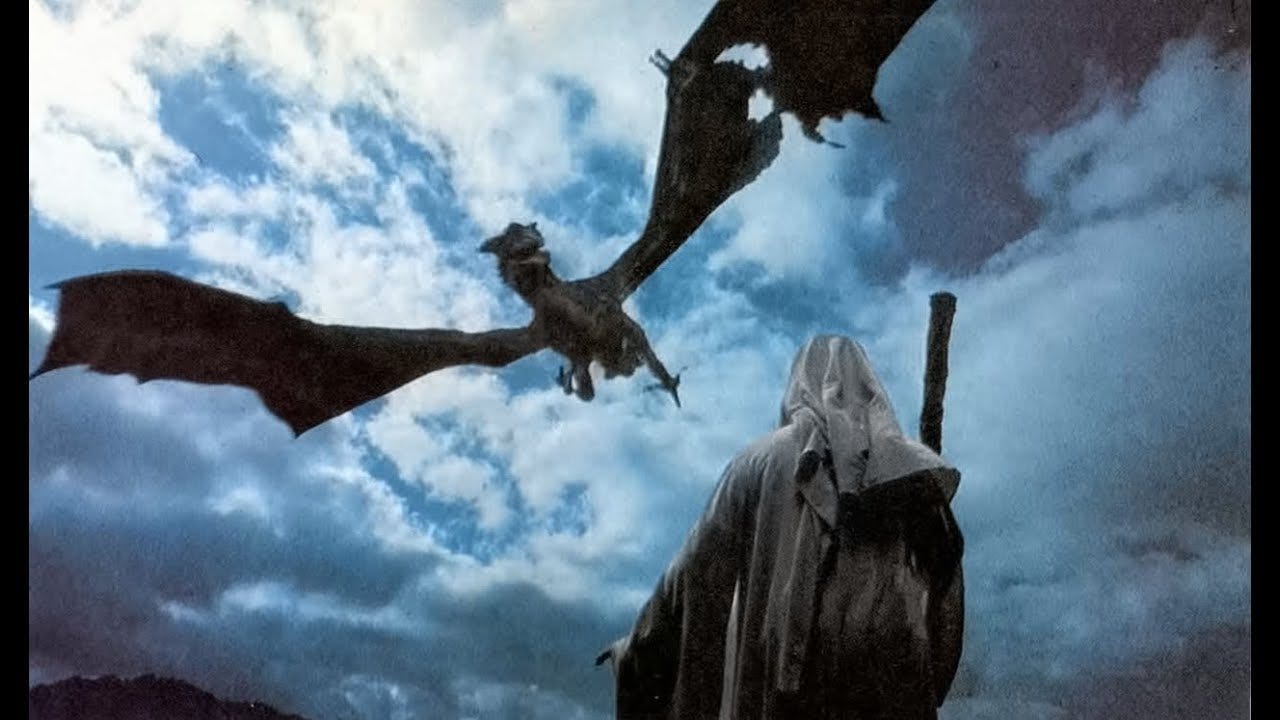
Dragonslayer is a classic fantasy tale of a brave young warrior, a sacrificial virgin chained to a post, and a hoary old beast that must be slain, with a little bit of 1980s nudity thrown in to really give the film some true late night cable value, and I was honestly surpised to find out that it’s actually pretty good too. Also, while it’s probably right that they didn’t win either of their awards, the nominations were actually pretty well-deserved, especially the effects, and not just for being done in 1981 either.
All in all, Dragonslayer turned out to be surprisingly little gem, and I was happy that I finally took the chance to check it out.
Too bad about that headstrong princess though…
